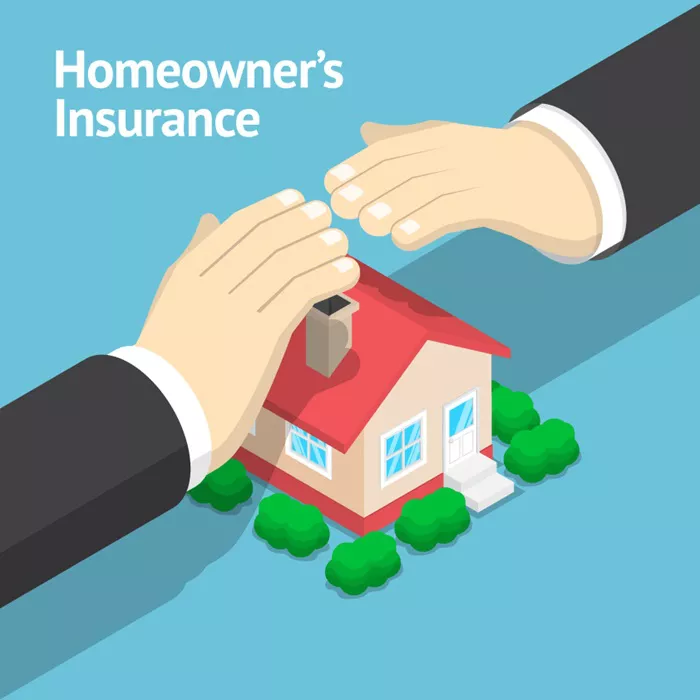Homeowner insurance is a crucial financial tool that provides protection for homeowners against unexpected events that may damage or destroy their homes and belongings. It serves as a safety net, offering financial assistance to repair or replace property and cover liability expenses in the event of accidents on the premises. Understanding homeowner insurance and its importance is essential for homeowners to safeguard their investments and provide peace of mind for themselves and their families.
Most Common Homeowner Insurance Policy
Among the various types of homeowner insurance policies available, the Homeowners-3 (HO-3) policy stands out as the most common choice for single-family homes. HO-3 policies are comprehensive and versatile, offering coverage for a wide range of perils that could potentially damage a home. This makes them suitable for most homeowners seeking robust protection for their properties.
Coverage Details
An HO-3 policy typically includes several types of coverage:
Dwelling Coverage: This covers the physical structure of the home, including its foundation, walls, roof, and attached structures such as garages. In the event of covered perils like fire, windstorms, or vandalism, dwelling coverage helps pay for repairs or rebuilding the home to its pre-loss condition.
Other Structures Coverage: This extends coverage to structures on the property that are not attached to the main dwelling, such as fences, sheds, and detached garages. Other structures coverage helps repair or replace these structures if they are damaged by covered perils.
Personal Property Coverage: This protects the homeowner’s personal belongings, including furniture, clothing, electronics, and appliances, against covered perils both inside and outside the home. Personal property coverage reimburses homeowners for the cost of repairing or replacing damaged or stolen items, up to the policy’s limits.
Liability Coverage: Liability coverage protects homeowners against lawsuits for bodily injury or property damage that they are legally responsible for. This coverage helps pay for legal defense costs, medical expenses, and damages awarded to the injured party, up to the policy’s limits.
Additional Coverage Options
In addition to the standard coverage provided by an HO-3 policy, homeowners may have the option to add supplementary coverage to address specific risks. For example:
Flood Insurance: Standard homeowner insurance policies typically do not cover flood damage. Homeowners in flood-prone areas may need to purchase a separate flood insurance policy through the National Flood Insurance Program (NFIP) or a private insurer to protect against this risk.
Earthquake Insurance: Similarly, earthquake damage is typically not covered by standard homeowner insurance policies. Homeowners in earthquake-prone regions may choose to purchase earthquake insurance to protect their homes and belongings from this specific peril.
Factors Affecting Policy Choice
When selecting a homeowner insurance policy, homeowners should consider several factors to ensure they have adequate coverage:
Coverage Limits: The coverage limits of the policy should be sufficient to rebuild the home and replace personal belongings in the event of a total loss.
Deductibles: Homeowners should choose deductibles that they can comfortably afford to pay out of pocket in the event of a claim. Higher deductibles often result in lower insurance premiums but require homeowners to pay more upfront in the event of a loss.
Value of Insured Items: Homeowners should accurately assess the value of their home and personal belongings to ensure they have adequate coverage in place. Underestimating the value of insured items could leave homeowners underinsured in the event of a claim.
Tips for Choosing the Right Policy
To choose the best homeowner insurance policy for their needs, homeowners should:
Compare Rates: Obtain quotes from multiple insurance companies to compare coverage options and premiums. Be sure to consider the reputation and financial stability of the insurance companies as well.
Review Policy Exclusions: Carefully review the policy exclusions to understand what is not covered. Consider purchasing additional coverage or endorsements to fill any gaps in coverage that may exist.
Consider Bundling: Some insurance companies offer discounts for bundling homeowner insurance with other policies, such as auto insurance. Explore bundling options to potentially save money on premiums.
Review Policy Annually: Review your homeowner insurance policy annually to ensure it still meets your needs. Update coverage limits and make any necessary adjustments based on changes to your home or personal belongings.
Insurance Company Ratings
When selecting an insurance company, homeowners should consider factors such as financial strength, customer service, and claims satisfaction ratings. Top-rated insurance companies known for their homeowner insurance offerings include:
State Farm: State Farm is one of the largest and most well-known insurance companies in the United States, offering a range of homeowner insurance options and excellent customer service.
Allstate: Allstate is another leading provider of homeowner insurance known for its customizable coverage options and strong financial stability.
USAA: USAA provides homeowner insurance primarily to military members and their families, offering competitive rates and outstanding customer service.
Conclusion
By researching insurance company ratings and comparing coverage options, homeowners can make an informed decision when choosing a homeowner insurance policy that meets their needs and provides the necessary protection for their most valuable assets.
FAQs About Homeowners Insurance
1. What is the most popular form of homeowners insurance?
The most popular form of homeowners insurance is the Homeowners-3 (HO-3) policy. HO-3 policies are comprehensive and provide coverage for your dwelling, personal property, and liability. They typically protect against a wide range of perils, such as fire, theft, vandalism, and natural disasters like windstorms and hail. HO-3 policies are commonly chosen because they offer broad coverage for a variety of risks, making them suitable for many homeowners.
2. What is the most common use of homeowners insurance?
The most common use of homeowners insurance is to protect your home and belongings from unexpected damage or loss. Homeowners insurance provides financial protection against risks such as fire, theft, vandalism, and natural disasters. In the event of a covered loss, homeowners insurance can help pay for repairs or replacement of your property, as well as provide temporary housing if your home becomes uninhabitable. Additionally, homeowners insurance includes liability coverage, which can help protect you financially if someone is injured on your property and you are found liable.
3. What are the most common types of home insurance claims?
Some of the most common types of home insurance claims include:
Water damage: This can result from burst pipes, leaking appliances, or plumbing issues.
Wind and hail damage: Severe weather events such as storms can cause damage to roofs, siding, and windows.
Fire damage: Fires can result from cooking accidents, electrical faults, or other causes, leading to significant property damage.
Theft: Burglaries and theft of personal belongings are common reasons for homeowners insurance claims.
Liability claims: These may arise if someone is injured on your property and you are found responsible.
4. What are the three most common kinds of property insurance?
The three most common kinds of property insurance are:
Homeowners insurance: This type of insurance provides coverage for homeowners, protecting their property and personal belongings from various risks.
Renters insurance: Renters insurance is designed for tenants who rent their living space. It covers personal belongings, liability, and additional living expenses in case the rental property becomes uninhabitable due to a covered loss.
Condo insurance: Condo insurance is tailored for condominium owners and typically covers the interior of the unit, personal property, and liability. It works in conjunction with the condominium association’s master policy, which covers the building’s structure and common areas.
You Might Be Interested In



















